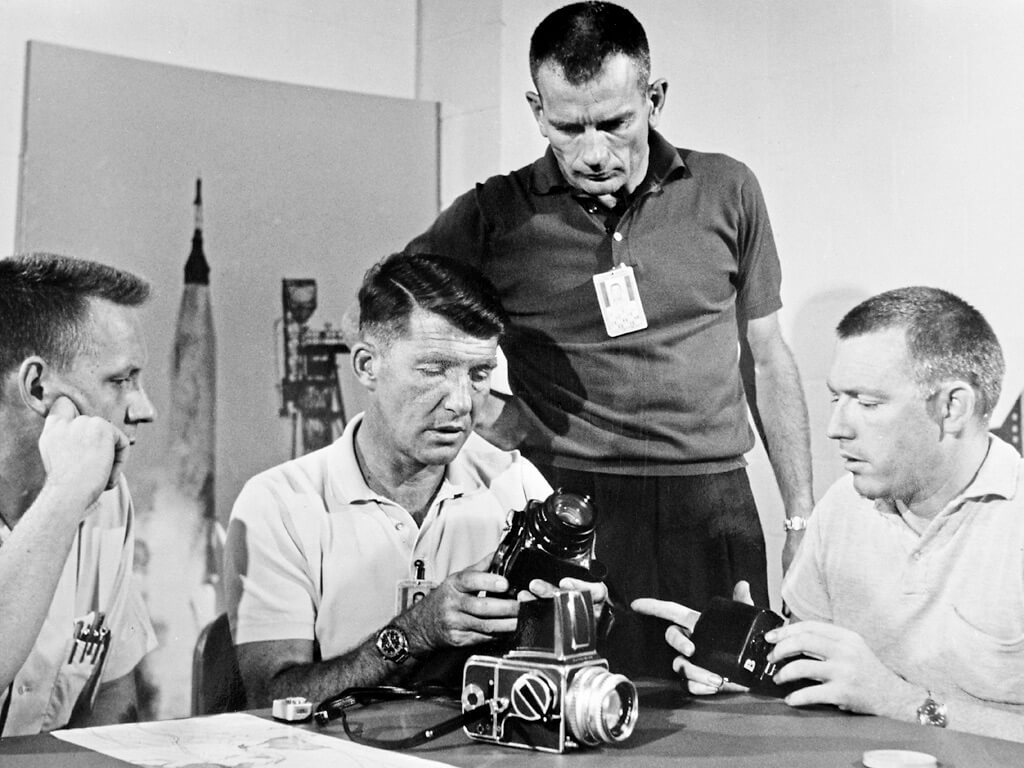Hasselblad is best-known for its medium format cameras, several of which have been used on NASA space missions, but it has also collaborated with several smartphone manufacturers such as Lenovo/Motorola, BlackBerry, and Vertu. Those collaborations were short-lived and underwhelming, which may be one of the reasons why the Swedish camera manufacturer is jumping into something deeper and more long-term. Today, Hasselblad and mobile device manufacturer OnePlus announced a new three-year partnership to develop cutting-edge camera capabilities for the latter’s upcoming generations of high-performance (but bang-for-the-buck) Android devices. The first fruits of the collaboration will find their way into the new OnePlus 9 Series smartphone, which will launch at a streaming event on March 23rd at 10am, along with a few other announcements teased with space-themed imagery on the mobile manufacturer’s website.
Even before the partnership was announced, the two companies were working together on the Hasselblad Camera for Mobile technology that will make its first appearance on the soon-to-launch OnePlus Series phone. Besides several months of development on more realistic and natural colors via the Natural Color Calibration with Hasselblad technology, the two companies are also focusing on individual controls for more seasoned photographers. In addition to enabling the use of 12-bit RAW format images, the new Hasselblad Pro Mode lets photographers adjust ISO, focus, exposure times, and white balance via an interface that was adapted from the camera manufacturer’s existing image processing software.
OnePlus also announced that it is investing $150 million over the next three years on advancing its camera technologies, most of it developed at the company’s four imaging and research labs across the globe. New areas of development include a 140-degree-field-of-view panoramic mode, ultra-fast focus capability (T-lens), and a freeform lens to reduce edge distortion on wide-angle images.
Full details on the upcoming OnePlus 9 Series smartphones won’t be released until March 23rd, but the company has revealed that the new devices will include a Sony IMX789 sensor, the largest so far on any OnePlus phone, with the resulting 12-bit RAW capability offering more data for greater editing capability. Hasselblad’s software will also deliver upgraded HDR video recording that can capture 4K 120FPS and 8K 30FPS video.
While close collaborations between Huawei and Leica and Sony and Zeiss have delivered impressive imaging innovation, it’s still not clear how deep and integrated the Hasselblad and OnePlus partnership will be, since mobile imaging is as much software and processor advances as it is about mechanics and lenses. Even so, the big push into camera technology is a smart move for OnePlus. Its cameras are one area that could use improvement when compared with other “flagship” phones from Apple and Samsung.
Available directly from OnePlus.com, T-Mobile, Verizon, online retailers such as Amazon, and brick-and-mortar stores such as Best Buy and B&H Photo Video that sell carrier or unlocked devices, the company has developed a loyal fan base and reputation for state-of-the-art and sleekly-designed smartphones with hip packaging and branding at more affordable prices than similar top-of-the-line models from Apple and Samsung. Aside from flagship models, the company’s entry-level Nord phone is a surprise hit at Metro by T-Mobile, according to Wave7 Research. By shoring up its imaging technology, OnePlus could prove to be an even more serious competitor to the established players.















